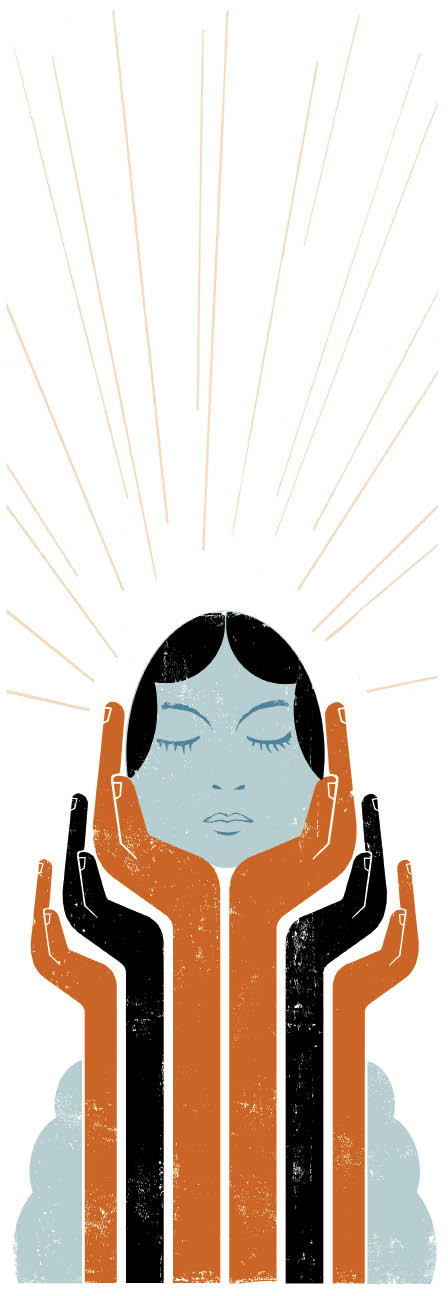BANG! was the sound I heard in the middle of my sleep. I jumped up, not seeing my husband, Matt. I ran down the stairs, and prayed, “Please, God, don’t let this be what I think it is.” I flew into our home office, where he might have been working. No Matt. I noticed the door to our garage was unlocked and ran in. Crying, shaking, I saw my husband of 15 years lying on the ground, a pool of blood around his head. He had finally done what he had talked about for years.
It was now 4:47 a.m. on October 31, 2011; the fatal gunshot had occurred minutes earlier. People gradually streamed into the house; our rabbi
 arrived shortly after. I was in a state of shock and have few recollections of that morning. I do remember repeatedly asking, “What do I tell my kids?” ages nine and seven. Just then, my seven-year-old came down the stairs, rubbing the sleep from his eyes, wondering why all these people were here. That was my cue to wake his brother and tell them their father was dead. Then the police interview, funeral, shiva—all a blur.
arrived shortly after. I was in a state of shock and have few recollections of that morning. I do remember repeatedly asking, “What do I tell my kids?” ages nine and seven. Just then, my seven-year-old came down the stairs, rubbing the sleep from his eyes, wondering why all these people were here. That was my cue to wake his brother and tell them their father was dead. Then the police interview, funeral, shiva—all a blur.
Matt, an attorney, suffered from a mental illness (Bipolar II Disorder unofficially diagnosed). He never acknowledged this and refused to seek treatment. Extremely bright, he was able to compensate throughout much of his 41 years. But, mental illness is still mental illness.
It has taken a community to help us in our ongoing process of healing, recovery, and growth. But recovering is exactly what we are doing. I write this nine months later, while vacationing with my boys and Sheila, my “eight-week friend,” at the lake. Sheila and I met at Annie’s Hope, a family bereavement center. My children and I attended eight-week bereavement groups—the boys in a group with other kids their age, their mother with others who had lost someone to suicide. Sheila and I bonded immediately. I marvel at our friendship. Two women, one Jewish and one Christian, who seemingly would have nothing else in common, have so much to share.
Our community has been a lifesaver. I grew up in New York and moved to St. Louis 18 years ago. My family still resides in New York, and people have asked me, “Are you moving back?” The thought never crossed my mind. My community, my support network, is here in St. Louis. With my synagogue, my children’s day school, and my professional community, I have never felt alone. Meals came to my house for months; I still have meals in my freezer. People volunteered to babysit, take my kids for play dates, run errands. As a psychologist, many of my friends are psychologists and psychiatrists, and I like to joke that I have “friends with benefits.” The emotional support was beyond what I expected.
There are those who have made it to the list of people I can call when I’m having a bad day, which can consist of any one or combination of these emotions: Sadness, grief, trauma, loneliness, anxiety, and anger. There is the intensity of missing Matt. Sometimes I have empathy and compassion for him because he was so miserable that he felt suicide was his only option. There are times I am enraged, times when I have immense anxiety about being a single mother. I know these emotions are normal and healthy. The intense crying sometimes seems like it will not end, but I have learned to “sit with” my negative emotions. I don’t have to like them, just tolerate them.
Therapy has been another crucial tool in our recovery. Three times per week, I drive to opposite ends of town, so that the boys and I each have a chance to talk to a professional. Some people ask me, “How much longer are the boys going to keep doing this?” My reply: “Forever—they experienced an unimaginable trauma that will forever affect them.” Now, here I sit at the lake pondering my family’s healing and recovery. My boys are fast asleep from a day of swimming and boating with Sheila’s son. My family and friends tell me that they are amazed by how well we are doing. Do I still have bad days? Absolutely! But they are interspersed with good days and feelings of hope.
